The cattle trade continues to outperform the beef price and Monday's sale at Elphin was no exception.
Breeding animals stood out again, with a number of customers willing to go the distance on the right type of breeding heifer.
A number of in-calf operators are unable to handle the prices being paid for store-born heifers from 2018 and 2019 and have instead moved to purchasing 2020-born heifers.
This strategy makes for a longer keep, but prices are a little easier to handle.
Top call of the day went to an 11-month-old Belgian Blue-cross weighing 430kg. After a marathon bidding session, she was eventually knocked down at €2,960.
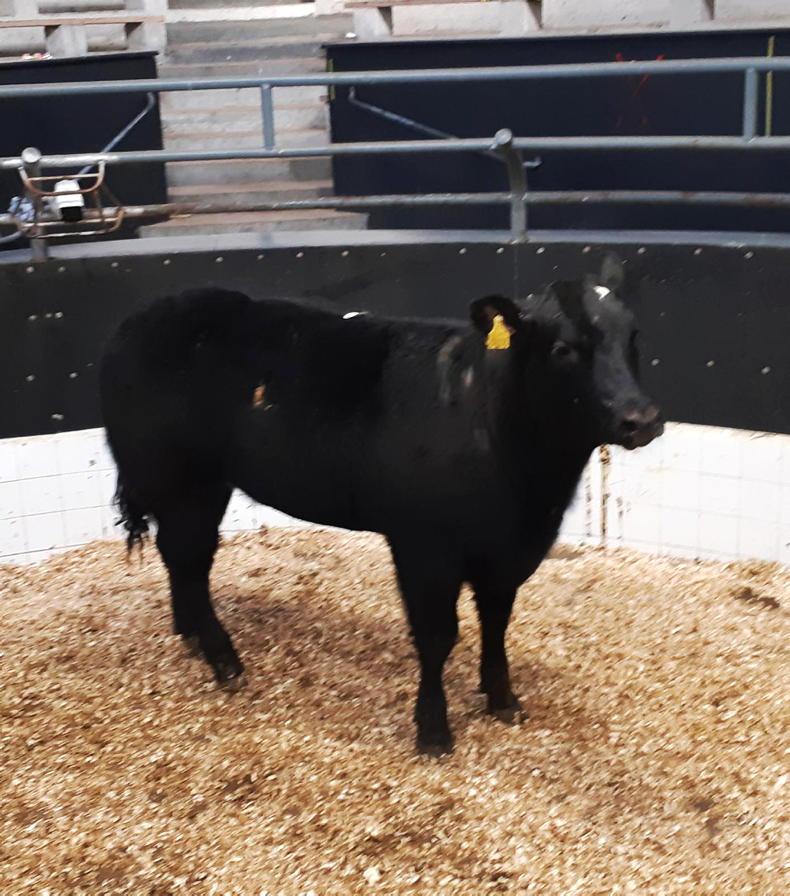
This March 2020-born Belgian Blue heifer weighed 430kg and sold for €2,960 (€6.88/kg)
Another notable was a May 2020-born Limousin heifer weighing 360kg. She was knocked down to the same purchaser as the top priced lot at €2,130.
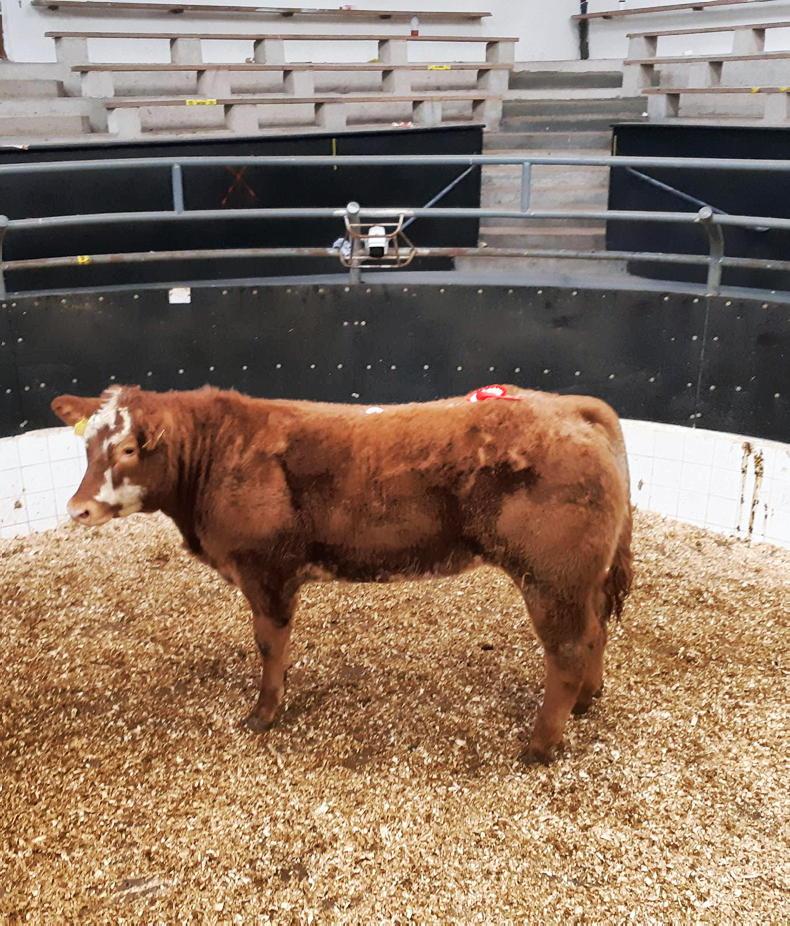
This May 2020-born Limousin heifer weighed 365kg and sold for €2,130 (€5.84/kg)
The next highest price was paid for a June 2020-born Limousin heifer. She weighed 355kg and sold for €1,670.
Lighter stock performing well
Prices were up on last year’s sale, with €3/kg being hit on a regular basis - especially for weanlings in the lower end of the 300kg to 400kg bracket.
The best trade was for weanlings between 300kg and 350kg, for lighter stock, very suitable for grass in 2021.
Many of the prizewinning heifers on offer crossed the €4/kg barrier, with a few making over €5/kg.
Plainer heifers were back at €2.50/kg to €2.80/kg, while heifers over 400kg were in around the €2.50/kg to €2.70/kg mark, depending on type and quality.
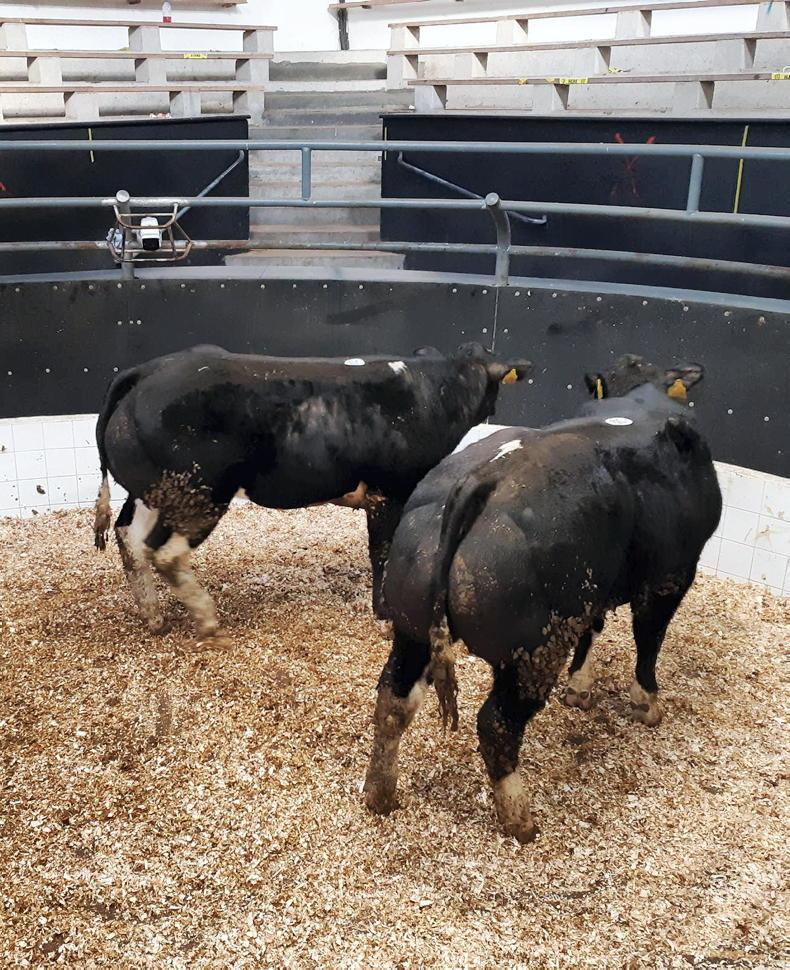
These pair of May 2020-born Belgian Blue heifers weighed 335kg and sold for €1,450 (€4.33/kg).
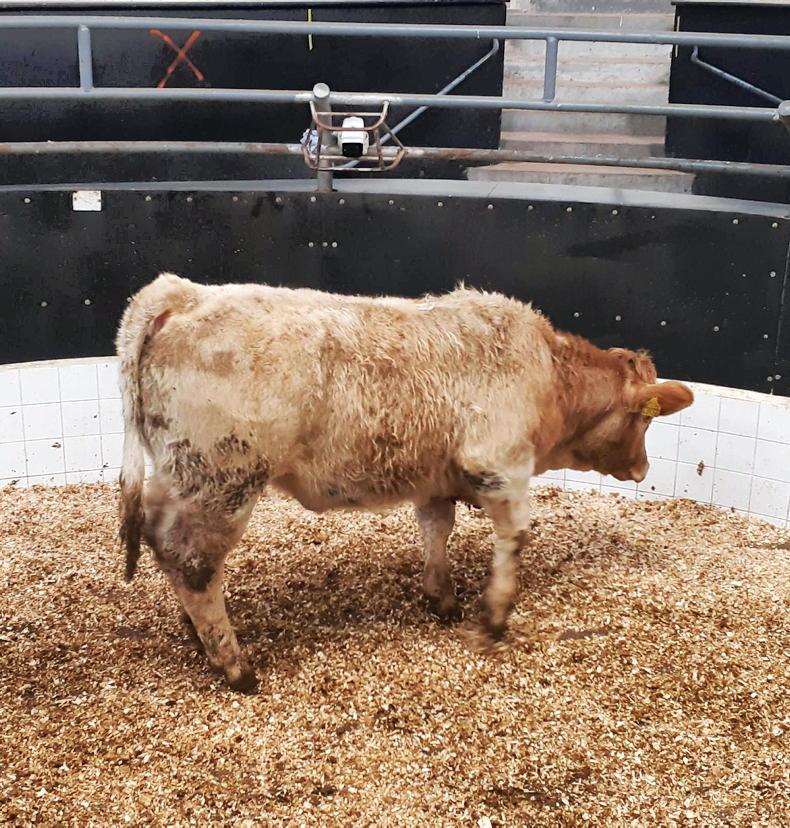
This June 2020-born Charolais heifer weighed 330kg and sold for €1,190 (€3.61/kg).
Good weather over last weekend in the west has meant summer grazers have started to venture out in relation to buying their 2021 supply of cattle.
The Areas of Natural Constraint (ANC) terms and conditions which stipulate that animals must be held for seven months has also meant that some of these customers like to buy in February instead of March.
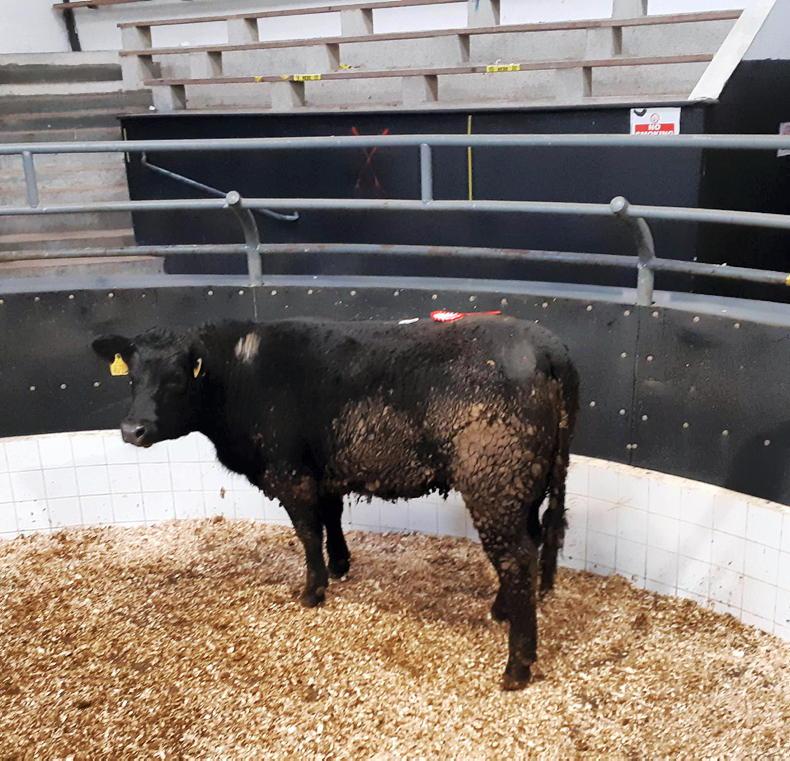
This November 2019-born Aberdeen Angus heifer weighed 425kg and sold for €980 (€2.31/kg)
Buying in February means that animals can be sold in October.
If summer grazers leave it until March to purchase their cattle, this means that cattle cannot be sold until November when ground conditions can get tricky in the west.
UK trade
A strengthening sterling against the euro has also meant Northern Ireland (NI) customers have been more active over the last few weeks.
While the majority of cattle moving north of the border are finished cattle and forward stores, there are also increasing numbers of weanlings moving north in recent weeks.
A shortage in slaughter-fit cattle and an increased demand for retail-spec beef from across the water has meant Irish cattle are back in play to service NI wholesale markets.
The value of sterling moving to 86p against €1 on Monday is also a huge factor in attracting NI customers south of the border to purchase animals.
Two months ago sterling was trading at 91p against €1, meaning if an animal was bought for €1,000 in mart in December, it cost the NI farmer £910.
An animal bought for €1,000 this week is only costing £860, a drop of £50 or almost €60/head.
That is one reason why NI customers are so important. The strength of the sterling means that they can go that bit further when buying animals.
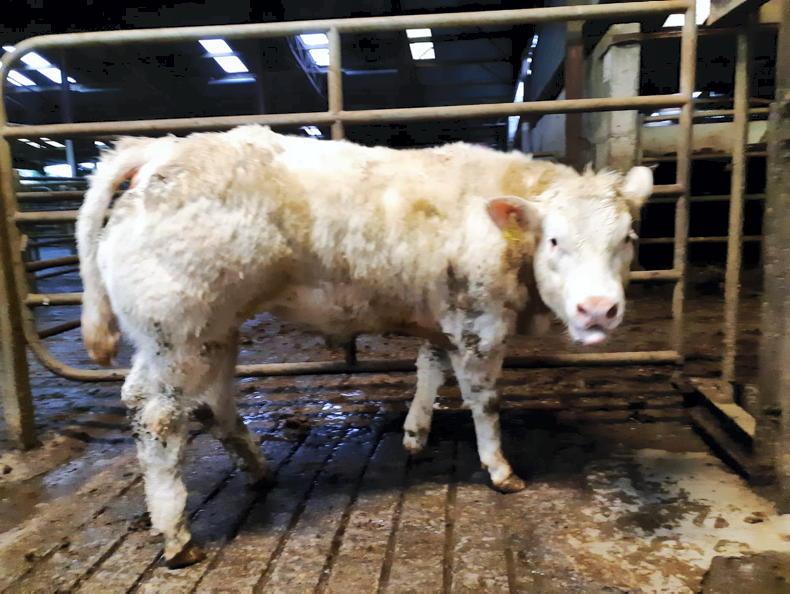
This August 2020-born Charolais heifer weighed 345kg and sold for €1,300 (€3.77/kg)
Upcoming sale
The annual spring show and sale of bull weanlings takes place in Elphin Mart on Monday 1 March.
This mart report was powered by Martbids, the Irish Farmers Journal's online bidding platform.
For more mart coverage and market analysis check out this week’s Irish Farmers Journal.
The cattle trade continues to outperform the beef price and Monday's sale at Elphin was no exception.
Breeding animals stood out again, with a number of customers willing to go the distance on the right type of breeding heifer.
A number of in-calf operators are unable to handle the prices being paid for store-born heifers from 2018 and 2019 and have instead moved to purchasing 2020-born heifers.
This strategy makes for a longer keep, but prices are a little easier to handle.
Top call of the day went to an 11-month-old Belgian Blue-cross weighing 430kg. After a marathon bidding session, she was eventually knocked down at €2,960.

This March 2020-born Belgian Blue heifer weighed 430kg and sold for €2,960 (€6.88/kg)
Another notable was a May 2020-born Limousin heifer weighing 360kg. She was knocked down to the same purchaser as the top priced lot at €2,130.

This May 2020-born Limousin heifer weighed 365kg and sold for €2,130 (€5.84/kg)
The next highest price was paid for a June 2020-born Limousin heifer. She weighed 355kg and sold for €1,670.
Lighter stock performing well
Prices were up on last year’s sale, with €3/kg being hit on a regular basis - especially for weanlings in the lower end of the 300kg to 400kg bracket.
The best trade was for weanlings between 300kg and 350kg, for lighter stock, very suitable for grass in 2021.
Many of the prizewinning heifers on offer crossed the €4/kg barrier, with a few making over €5/kg.
Plainer heifers were back at €2.50/kg to €2.80/kg, while heifers over 400kg were in around the €2.50/kg to €2.70/kg mark, depending on type and quality.

These pair of May 2020-born Belgian Blue heifers weighed 335kg and sold for €1,450 (€4.33/kg).

This June 2020-born Charolais heifer weighed 330kg and sold for €1,190 (€3.61/kg).
Good weather over last weekend in the west has meant summer grazers have started to venture out in relation to buying their 2021 supply of cattle.
The Areas of Natural Constraint (ANC) terms and conditions which stipulate that animals must be held for seven months has also meant that some of these customers like to buy in February instead of March.

This November 2019-born Aberdeen Angus heifer weighed 425kg and sold for €980 (€2.31/kg)
Buying in February means that animals can be sold in October.
If summer grazers leave it until March to purchase their cattle, this means that cattle cannot be sold until November when ground conditions can get tricky in the west.
UK trade
A strengthening sterling against the euro has also meant Northern Ireland (NI) customers have been more active over the last few weeks.
While the majority of cattle moving north of the border are finished cattle and forward stores, there are also increasing numbers of weanlings moving north in recent weeks.
A shortage in slaughter-fit cattle and an increased demand for retail-spec beef from across the water has meant Irish cattle are back in play to service NI wholesale markets.
The value of sterling moving to 86p against €1 on Monday is also a huge factor in attracting NI customers south of the border to purchase animals.
Two months ago sterling was trading at 91p against €1, meaning if an animal was bought for €1,000 in mart in December, it cost the NI farmer £910.
An animal bought for €1,000 this week is only costing £860, a drop of £50 or almost €60/head.
That is one reason why NI customers are so important. The strength of the sterling means that they can go that bit further when buying animals.

This August 2020-born Charolais heifer weighed 345kg and sold for €1,300 (€3.77/kg)
Upcoming sale
The annual spring show and sale of bull weanlings takes place in Elphin Mart on Monday 1 March.
This mart report was powered by Martbids, the Irish Farmers Journal's online bidding platform.
For more mart coverage and market analysis check out this week’s Irish Farmers Journal.












 This is a subscriber-only article
This is a subscriber-only article








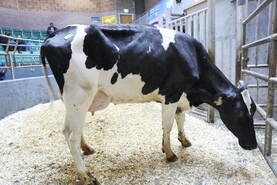



SHARING OPTIONS: